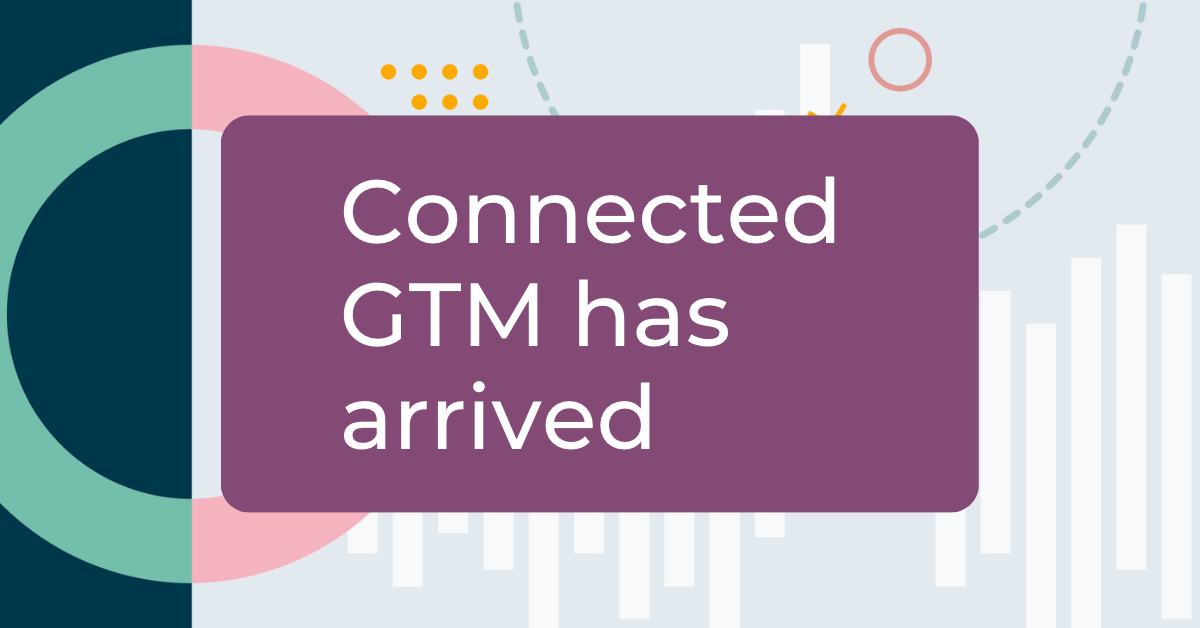Go-to-market is in the midst of a transition from GTM 1.0 - the way it’s been done since before RevOps was a thing - to GTM 2.0, where all revenue-driving functions are connected.
The transition from GTM 1.0 to GTM 2.0 (also known as Connected Go-to-Market) plays out in how teams are structured (around the customer), how they operate (more strategically), and what they actually do all day (efficiently).
GTM 2.0 starts with the customer experience
Customers have never thought of your company as a group of teams. Whether they’re shopping for a solution, buying what you offer, enjoying your product, struggling with a problem, deciding to use something else, choosing to upgrade, or renewing their contract, they should feel as if everyone they’re in touch with knows exactly what they need. The lines between sales, marketing, and customer success blur. Product teams and GTM inform each other’s roadmaps, too.
To be customer centric, orgs need to add many, many dotted lines between roles, if not completely new structures. Everyone in the GTM org needs a shared way to trace every customer from discovery through renewal and expansion, and concrete expectations of all the pivot points along the way.
GTM 2.0 requires strategic RevOps
LinkedIn reported that Head of Revenue Operations is the fastest-growing job titles in the US over the past five years, making it a leading role on the rise. Heads of RevOps aren’t grown-up Sales Ops folks. They’re strategic leaders who act as the connective tissue between all go-to-market functions. They’re leaders in systems and process who are also skilled and talented in looking around the corner to find the biggest opportunities to maximize revenue and efficiencies across not only sales, but marketing, customer success, and account management as well. COO of RevOps will be a title within three years.
Practical tips for transitioning from GTM 1.0 to GTM 2.0
These four tactical changes will usher in connected GTM in your company.
1 - Organization: Centralize ownership of all revenue (new, expansion, renewal) under one C-level leader. As above, we believe COO of RevOps will emerge as that leader’s title. In the meantime, HubSpot calls theirs a Chief Customer Officer. CRO is another candidate.
2 - Talent: Invest in strategic RevOps leaders. You still need folks who are strong in analytics, systems, and processes. RevOps is the operating system of GTM 2.0. At the same time, you need a hefty leaning toward long-term vision and planning for how to give customers what they need five years from now, today.
3 - Compensation: Build GTM team comp plans around net revenue retention. New revenue is only part of the puzzle, and it’s the least efficient piece. The customer journey continues through many phases post-purchase, and teams should be incentivized to provide value for each of those phases.
4 - Data and insights: Unify cross-team data under a system that clearly shows the customer lifecycle on an ongoing basis. Activate the insights from that data with automation to eliminate busywork and unlock personalized outreach at scale.
Evolution is good pain
Something we talk about at Falkon is the difference between good pain and bad pain. Good pain is those first few minutes of a workout, when your body isn’t so happy, but it knows everything is OK – everything is improving, even. It’s just hard. Bad pain is an indication of something actually wrong.
The evolution of GTM is good pain. It might feel overwhelming or stressful or hurried, but everything is getting better. Do your burpees (ugh), breathe heavily for a little while, and soon, you’ll be enjoying a new level of performance where customers are getting more of what they need, teammates are working with incredible efficiency, and revenue growth is way more predictable for the long term.
Take our quick quiz to find out if your team is set up for GTM 2.0.

